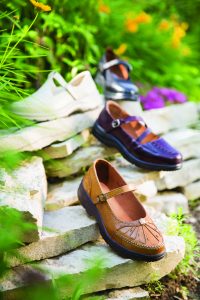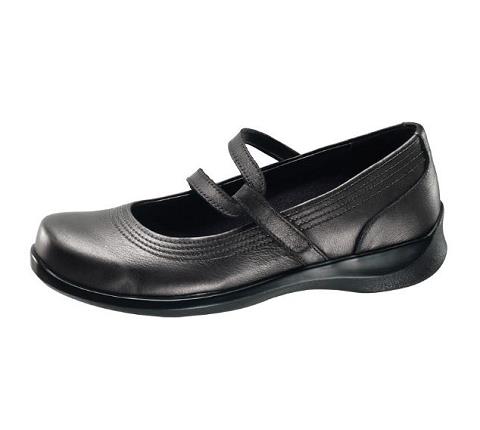There is a good reason Medicare covers a pair of diabetic shoes each year for qualified people in the United States. The risk of serious complications, up to and including loss of limbs, is very real for people with diabetes. Foot care is a must for this segment of the population, and diabetic shoes are among of the most important preventative tools available. Despite this fact, many people are still unsure whether they need diabetic shoes. What makes these therapeutic shoes different from every day, “regular” sneakers, anyway?
First, let’s clarify the basic differences – if you look closely, you’ll see there are many! Here are some of the characteristics of therapeutic shoes for people with diabetes:
First, let’s clarify the basic differences – if you look closely, you’ll see there are many! Here are some of the characteristics of therepeutic shoes for people with diabetes:
Increased depth for insoles/orthotics: Diabetic shoes have significantly more depth. This added space can accommodate orthotics or insoles (3 pairs of therepautic inserts are also covered by Medicare each year).

Smooth interior for blister prevention: People with diabetes are extremely prone to blisters and ulcers, so these shoes take no chances. Stitching will only be found on the outside of the shoe, while the inside remains completely smooth.
Heel counter to keep the foot in place: A heel counter is a plastic insert that reinforces the heel cup of a shoe. These are built into diabetic shoes to keep the foot in place and increase stability.
Padding for stability: Padding will be found around the collar of the ankle and the tongue of the shoe. Like the heel counter, this helps keep the foot secured in place and prevents twisted ankles and other missteps.
Increased space and protection for toe health: Unlike other shoes which are tight around the toes, these shoes offer more space in the toebox. This is a particularly helpful feature for those with conditions like hammertoes. The toebox also has added protection, so stubbing your toe will be less of a risk to your foot health.
tight around the toes, these shoes offer more space in the toebox. This is a particularly helpful feature for those with conditions like hammertoes. The toebox also has added protection, so stubbing your toe will be less of a risk to your foot health.
Non-skid soles and proper fitting to prevent falls: Twisting an ankle, tripping over feet or falling over can cause particular issues for people with diabetes, especially those who have nerve damage or pre-existing foot conditions. The stable design of these shoes, professional custom fittings, and no-slip soles can help keep wearers safe and secure.
Diabetic insoles to prevent movement within the shoe: Blisters and other injuries are often caused by an unsecured foot moving back and forth within a shoe. Multi-density diabetic insoles are a critical part of diabetic shoes (that’s why Medicare covers 3 per year!) as they help to prevent this issue.
Can people without diabetes wear these shoes?
Non-diabetics purchasing and wearing therapeutic shoes is actually fairly common! They are extremely comfortable and effective in preventing ulcers, blisters, and other issues, so feet of all kinds can find refuge in a pair.
The most inexpensive way to purchase diabetic shoes if you are not covered by Medicare is to go to an insurance-approved supplier like No Cost Shoes. While No Cost Shoes is mainly used by people approved for direct billing to insurance, it also offers the option to purchase shoes at a lower rate than most storefronts because of its wide inventory.
Can I just wear comfortable sneakers if I have diabetic neuropathy or related issues?
As you can see from the above comparison, there are major differences between even the most comfortable pair of sneakers and properly fitted diabetic shoes. Why take the risk, especially when you can get shoes completely for free through insurance and Medicare? Not only are diabetic shoes the healthier and safer option, but for many Americans, they are less costly as well.





I’m on medicare and have been diabetics for 40 years. I’m 65 how can I get a pair of diabetic sneakers.
Hi JoAnn! We are very happy to check your eligibility for Medicare-covered shoes and provide some for you.
Simply provide some basic information to us using this form so we can look into your coverage: https://www.nocostshoes.com/no-cost-shoes-do-i-qualify.php
You can also call us at 1-866-923-2423.
Thanks again!
I usually wear shoes with no toes or wide toes because I have a bad big toe , nail fungus and get ingrown nails on it . I try to find anything that is half way stylish but it is hard. I know flip flops are bad for diabetic s but diabetic s like to look stylish too.